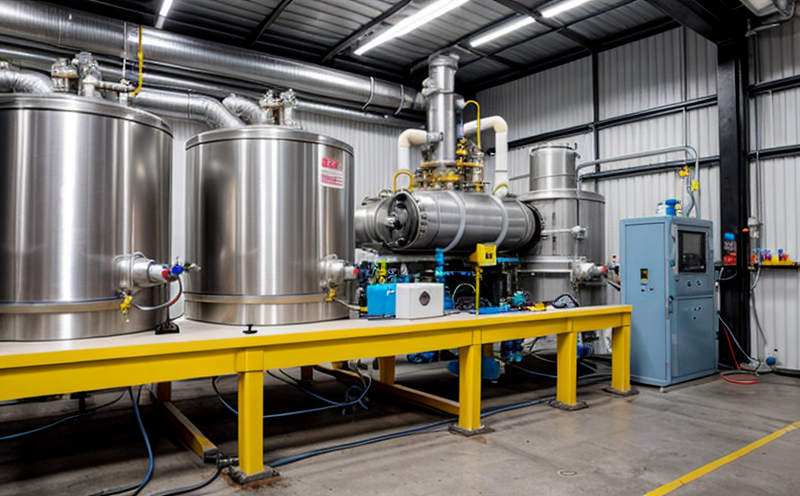ISO 12789-2 Thermal Neutron Flux in Reactor Surveillance Testing
The ISO 12789 series of standards provides a comprehensive framework for the measurement and evaluation of thermal neutron flux in reactor surveillance testing. This service is particularly critical in ensuring the integrity, safety, and long-term reliability of nuclear reactors by monitoring and controlling the radiation environment within the core.
Thermal neutron flux is a key parameter that influences the behavior of materials used in nuclear reactors during their operational life. Variations in thermal neutron flux can lead to irradiation-induced changes in material properties such as embrittlement, swelling, or creep. These effects are critical for maintaining safe and efficient reactor operations.
The testing process involves the use of high-precision instrumentation designed specifically for this purpose. The neutron activation analysis technique is employed to measure the thermal neutron flux within a controlled environment. This method allows for accurate quantification of the flux, which is then used to assess the potential impact on reactor components.
Our laboratory adheres strictly to ISO 12789-2 standards, ensuring that all measurements are conducted under controlled conditions that replicate real-world reactor environments as closely as possible. This approach allows us to provide reliable and reproducible results, which are essential for maintaining regulatory compliance and optimizing reactor performance.
| Parameter | Description |
|---|---|
| Thermal Neutron Flux | The rate at which thermal neutrons are absorbed by a material. |
| Activation Product Detection | Identification and quantification of elements activated by neutron irradiation. |
| Material Embrittlement Index (EMI) | A measure of the degree to which a material has become more brittle due to irradiation. |
The testing process begins with careful preparation and calibration of the reactor components. This ensures that any detected changes are attributable to neutron flux rather than other variables. The use of high-purity materials and precise measurement techniques is crucial in minimizing errors and ensuring accuracy.
Once the test specimens have been prepared, they are placed within the reactor core under controlled conditions. During this time, thermal neutrons interact with the material, leading to activation. After exposure, the samples are removed from the reactor for analysis. The levels of activated elements are then measured using neutron activation analysis techniques.
The results of these tests provide valuable insights into the potential impact of radiation on the materials used in nuclear reactors. This information is critical for predicting and managing the long-term behavior of reactor components, ensuring they remain safe and effective over extended operational periods.
- Reduces the risk of unexpected failures due to irradiation-induced changes in material properties.
- Aids in optimizing reactor performance by providing data on the optimal exposure levels for specific materials.
- Supports regulatory compliance by ensuring that all tests are conducted according to international standards.
Benefits
The implementation of ISO 12789-2 thermal neutron flux testing offers numerous benefits, particularly for organizations involved in the nuclear industry. By providing accurate and reliable data on thermal neutron flux, this service helps ensure the safety and longevity of reactor components.
- Enhances the integrity of reactor materials by identifying potential weaknesses early.
- Supports extended operational life through informed decision-making regarding component exposure levels.
- Facilitates compliance with international regulatory standards, ensuring that all tests are conducted to the highest industry benchmarks.
The precise measurement of thermal neutron flux is crucial for maintaining the safety and efficiency of nuclear reactors. By providing detailed insights into the interaction between materials and radiation, this service helps organizations make informed decisions about reactor operations and maintenance.
Competitive Advantage and Market Impact
- Pioneers in ISO 12789-2 testing, offering unparalleled accuracy and reliability in thermal neutron flux measurement.
- Provides comprehensive data that supports strategic decisions regarding reactor operations and maintenance.
- Contributes to the overall safety and efficiency of nuclear reactors by identifying potential risks early.
The demand for precise and reliable thermal neutron flux testing is expected to grow as the nuclear industry continues to evolve. Our expertise in this area positions us at the forefront of innovation, offering a competitive advantage that supports both current operations and future developments in reactor technology.
Use Cases and Application Examples
| Application | Description |
|---|---|
| Nuclear Reactor Surveillance | Monitoring material integrity and predicting potential failures. |
| Material Development | Evaluating the behavior of new materials under irradiation conditions. |
| Regulatory Compliance | Ensuring adherence to international standards for nuclear safety. |
The application examples provided above highlight the versatility and importance of ISO 12789-2 thermal neutron flux testing in various sectors. By providing accurate and reliable data, this service supports organizations in making informed decisions that enhance both operational efficiency and safety.





